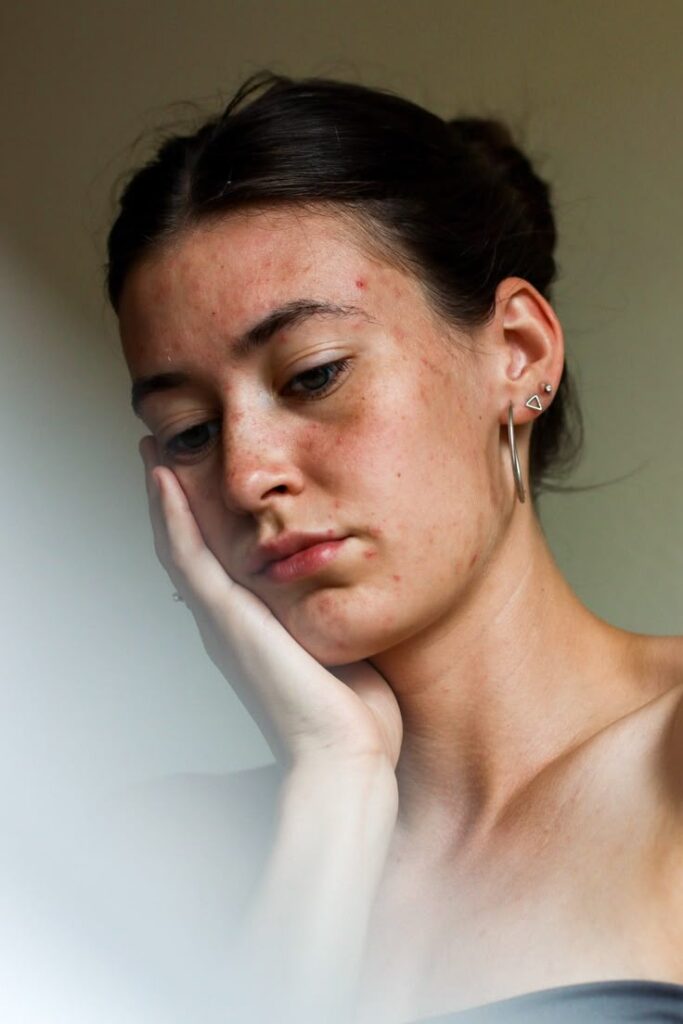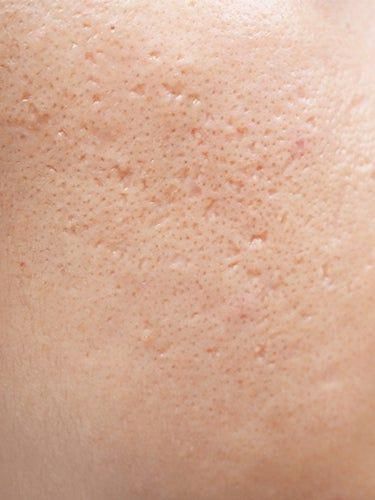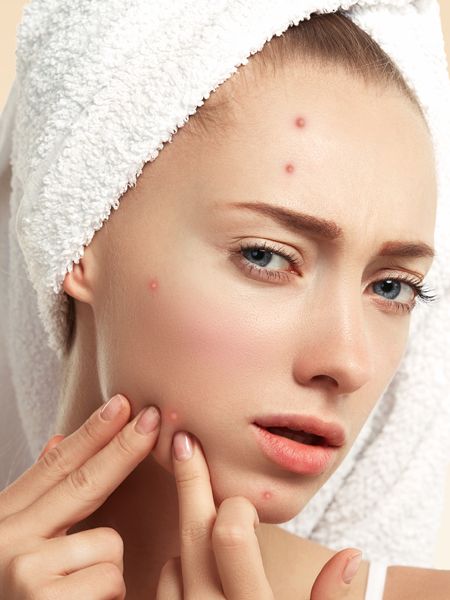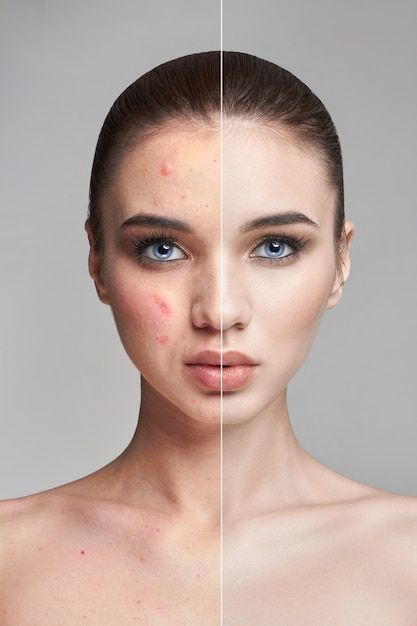Your cart is currently empty!
Can I prevent acne scars?
Yes — you can absolutely prevent many acne scars, especially if you act early and treat your skin with care. Here’s how:
Treat Acne Early & Effectively
Use gentle skincare: Wash with a mild cleanser (like salicylic acid or benzoyl peroxide) to prevent clogged pores.
Avoid picking or popping pimples—this increases inflammation and scarring risk.
See a dermatologist if acne is severe (cystic/nodular) for prescription treatments (retinoids, antibiotics, or hormonal therapy).
How to Prevent Acne Scars
✅ 1. Treat Acne Early & Consistently
The best way to prevent acne scars is to treat acne before it gets severe. The longer breakouts go untreated, the greater the risk of deep inflammation that damages your skin’s collagen — which leads to scarring.
🔹 Why It Matters:
- Early treatment minimises inflammation, which reduces the chances of permanent scars.
- It also helps prevent cystic or nodular acne, which is the most likely to leave scars.
🔹 What You Can Use:
- Benzoyl Peroxide – Kills acne-causing bacteria and reduces inflammation.
- Salicylic Acid – Unclogs pores and exfoliates. Great for blackheads and whiteheads.
- Topical Retinoids (like adapalene) – Boost skin turnover and prevent clogged pores.
- Niacinamide – Calms inflammation and improves skin barrier function.
- Azelaic Acid – Fights bacteria, pigmentation, and inflammation.
🔹 For Moderate to Severe Acne:
- Oral antibiotics (short-term) to reduce inflammation and bacteria
- Hormonal therapy (e.g. the pill or spironolactone for women)
- Isotretinoin (Accutane) – a powerful long-term solution for resistant acne
🔹 When to See a Professional:
- If your acne is painful, deep, cystic, or not responding to over-the-counter treatments
- If you’re already seeing dark spots or textured scars
✅ Consistency is key — stick with treatments for at least 6–12 weeks to see results.


❌ 2. Don’t Pick, Pop, or Squeeze Pimples
We’ve all been tempted to squeeze a pimple — but doing so can seriously backfire, especially if you’re trying to prevent scars.
🔹 Why It’s a Bad Idea:
- Picking introduces bacteria into the skin, increasing inflammation and infection risk.
- It damages skin tissue and collagen, making scarring more likely.
- It often leaves behind dark marks (post-inflammatory hyperpigmentation) or textured scars that are harder to treat than the pimple itself.
🔹 What to Do Instead:
✅ Hands off policy – Let spots heal naturally whenever possible.
✅ Use a spot treatment (with benzoyl peroxide or salicylic acid) to dry out the blemish.
✅ Apply hydrocolloid pimple patches – they protect the area, absorb fluid, and reduce the urge to touch.
✅ If a whitehead is ready to pop, see a professional for safe extraction.
💡 Pro Tip:
Touching your face frequently spreads oil and bacteria, so try to keep your hands clean and avoid resting your face on your hands.
☀️ 3. Use Sunscreen Every Day
If there’s one non-negotiable in preventing acne scars and dark spots, it’s daily sunscreen — even on cloudy days or when you’re indoors!
🔹 Why It’s Essential:
- UV exposure darkens post-acne marks and scars (especially in skin types prone to pigmentation).
- Sun damage slows down healing and can make scars appear more visible or permanent.
- It protects freshly treated skin after microneedling, peels, or laser — reducing the risk of post-inflammatory hyperpigmentation (PIH).
🔹 What to Look For:
- SPF 30 or higher
- Broad-spectrum protection (UVA + UVB)
- Non-comedogenic (won’t clog pores)
- Oil-free or mattifying formulas for acne-prone skin
🔹 Top Aussie Faves:
🇦🇺 Recommended for acne-prone skin in Australia:
- La Roche-Posay Anthelios Invisible Fluid SPF50+ – Lightweight, fragrance-free
- Ultra Violette Clean Screen SPF30 – Great for oily skin, zinc-based
- Neutrogena Ultra Sheer Face & Body SPF50+ – Budget-friendly and fast-absorbing
- Bondi Sands SPF50+ Face Lotion Fragrance Free – Aussie made, reef safe, and gentle
💡 Pro Tip:
Apply a full teaspoon to your face and neck every morning, and reapply every 2 hours if you’re outdoors or sweating.

💧 4. Hydrate & Moisturise Your Skin
Even if you have oily or acne-prone skin, moisturising is crucial — especially if you want to prevent scarring and support healthy healing.
🔹 Why It Matters:
- Dry or irritated skin can slow healing and make post-acne marks worse.
- Hydrated skin is more resilient and less likely to scar after inflammation.
- Many acne treatments (like benzoyl peroxide, salicylic acid, and retinoids) can cause dryness or flaking, which needs to be balanced with a gentle moisturiser.
🔹 How to Choose the Right Moisturiser:
Look for products that are:
✅ Non-comedogenic (won’t clog pores)
✅ Oil-free or lightweight for acne-prone skin
✅ Formulated with soothing, hydrating ingredients like:
- Hyaluronic acid – draws moisture into the skin
- Glycerin – softens and protects
- Niacinamide – reduces redness and improves skin barrier
- Ceramides – restore the skin’s protective barrier
🔹 Best Moisturisers in Australia (for acne-prone skin):
🇦🇺
- CeraVe Moisturising Lotion – Lightweight, great barrier support
- La Roche-Posay Toleriane Sensitive Fluid – Calming, fragrance-free
- QV Face Oil-Free Moisturiser – Aussie-made, gentle and mattifying
- Neutrogena Hydro Boost Water Gel – Hydrating and non-greasy
💡 Pro Tip:
Apply moisturiser while your skin is still slightly damp (after cleansing or misting) to lock in hydration.
 6. Spot-Treat Breakouts Immediately
6. Spot-Treat Breakouts Immediately
Treating pimples as soon as they appear helps to minimise inflammation, reduce healing time, and prevent scars from forming — especially if you catch them early!

- The longer a pimple is inflamed, the higher the risk of collagen damage, which can lead to permanent scars or dark marks.
- Spot treatments target the pimple directly, helping to shrink it faster and calm irritation before it worsens.







- La Roche-Posay Effaclar Duo+ – Great for early-stage breakouts and PIH
- Paula’s Choice CLEAR Acne Spot Treatment – Fast-acting salicylic acid formula
- Thursday Plantation Tea Tree Blemish Gel – Natural, gentle, Aussie brand
- Neutrogena Rapid Clear Spot Gel – Budget-friendly benzoyl peroxide option

- Apply on clean, dry skin — before moisturiser
- Avoid layering too many actives (e.g., don’t use strong retinoids + spot treatment in the same area)
- If skin becomes too dry or irritated, dial back to once per day or alternate days


🏥 7. Consider Professional Treatments for Active Acne
If over-the-counter products aren’t cutting it, or if your acne is moderate to severe, it’s worth exploring professional treatments to get it under control and prevent long-term scarring.
🔹 Why Professional Help Can Make a Big Difference:
- Dermatologists and skin therapists can tailor a treatment plan for your skin type, acne severity, and goals.
- Early intervention with stronger treatments can halt acne in its tracks, reducing the risk of deep, inflamed breakouts that lead to scars.
- Some treatments also boost healing, fade marks, and improve skin texture.
🔹 Popular In-Clinic Treatments in Melbourne:
✅ LED Light Therapy – Blue light kills acne bacteria; red light calms inflammation and promotes healing.
✅ Chemical Peels – Exfoliate dead skin and reduce clogged pores and pigmentation.
✅ HydraFacial / MediFacials – Deep cleans and hydrates without irritation.
✅ Microneedling (Skin Needling) – Stimulates collagen and helps treat both active acne and early scars.
✅ Laser Treatments – Target bacteria and reduce oil; also used for pigmentation and redness.
✅ Prescription Treatments – Dermatologists can prescribe topical retinoids, antibiotics, or oral medications (like isotretinoin/Accutane).
🔹 When to See a Professional:
- Your acne is painful, cystic, or leaves marks
- Over-the-counter products haven’t helped after 8–12 weeks
- You feel frustrated, self-conscious, or unsure what to use next
- You’re seeing early signs of scarring or textural changes
💡 Melbourne Tip:
Look for cosmetic clinics, dermatology centres, or skin-focused medispas that specialise in acne-prone skin. Many offer free consultations or acne management packages.

If you’re noticing post-acne marks or early scarring, it’s never too late to introduce gentle, effective ingredients that can help fade those marks and promote smoother skin. The key is gentleness — harsh treatments can irritate already sensitive or scarred skin, so go for soothing, anti-inflammatory options.
🔹 Best Ingredients for Preventing Scarring & Pigmentation:
Niacinamide (Vitamin B3)
- Benefits: Soothes inflammation, reduces redness, and strengthens the skin barrier.
- Why it helps: Helps reduce post-inflammatory hyperpigmentation (PIH) and improves skin texture.
- How to use: Apply as a serum in the morning or evening.
Vitamin C
- Benefits: Brightens dark spots, boosts collagen production, and evens out skin tone.
- Why it helps: Reduces the appearance of dark spots and hyperpigmentation from acne scars.
- How to use: Apply in the morning after sunscreen (Vitamin C can increase your skin’s sensitivity to sunlight).
Azelaic Acid
- Benefits: Anti-inflammatory and antimicrobial properties. Helps reduce redness and pigmentation.
- Why it helps: Great for acne-prone and sensitive skin, azelaic acid helps reduce scars and pigmentation without irritation.
- How to use: Use in the evening as a serum or in a cream formulation.
Mild Chemical Exfoliants (like Lactic Acid)
- Benefits: Exfoliates dead skin, helping to fade dark spots and improve skin texture.
- Why it helps: Gentle on sensitive skin, lactic acid (an AHA) sloughs off dead skin and encourages skin renewal, aiding in scar fading.
- How to use: Apply 2-3 times a week at night after cleansing.
🔹 How to Build a Routine:
Morning Routine:
- Cleanser → Vitamin C → Sunscreen (the most important step for pigmentation!)
Night Routine:
- Cleanser → Niacinamide → Azelaic acid or Mild Exfoliant (like lactic acid) → Moisturiser
💡 Pro Tip:
When introducing these ingredients, start slowly (especially exfoliants) and always patch test to ensure your skin tolerates them well.
At Medix Clinic, we offer a comprehensive range of skin and cosmetic treatments tailored to your needs. Our services include acne scarring in Melbourne, scar treatment in Melbourne, and radio frequency microneedling in Melbourne to promote skin repair and regeneration. We also provide professional skin needling in Melbourne, advanced skin tightening in Melbourne, and effective skin tag and mole removal in Melbourne. For pigmentation issues, we offer targeted pigmentation removal in Melbourne, and to restore your skin’s glow, we specialise in skin rejuvenation in Melbourne. Additionally, you can enhance your smile with our safe and effective LED teeth whitening in Melbourne